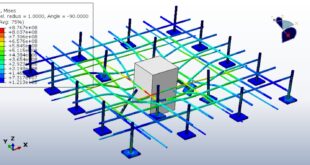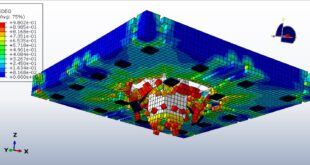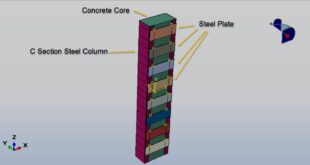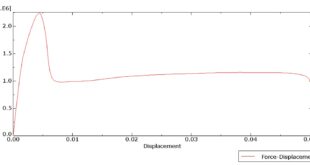Overview
The study of ballistic impact on Kevlar-reinforced gelatin is crucial for understanding body armor performance, behind-armor blunt trauma (BABT), and wound ballistics. Gelatin is widely used as a soft tissue simulant due to its mechanical similarity to human muscle tissue, while Kevlar (a para-aramid fiber) is a common ballistic-resistant material used in protective gear
The ballistic impact response of Kevlar-reinforced gelatin is an important area of study in protective equipment development and wound ballistics research. This simulation approach combines a soft tissue simulant (gelatin) with Kevlar fabric reinforcement to model human tissue protected by body armor. The Kevlar layers are modeled as some shell parts with cohesive behavior among the layers. The gelatin and bullet are modeled as solid parts. You can see a figure of the assembled parts below
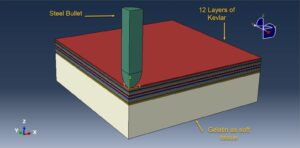
When a high-velocity projectile strikes a Kevlar-gelatin composite, complex interactions occur, including
Fabric deformation and fiber failure (yarn stretching, breakage, delamination)
Gelatin response (temporary cavity formation, stress wave propagation, permanent damage)
Energy dissipation mechanisms (friction, viscoelastic damping, plastic deformation)
Understanding this behavior helps improve body armor design, trauma mitigation, and forensic analysis of ballistic injuries
Applications
Body armor optimization (reducing BABT)
Forensic wound analysis (estimating injury severity)
Military and law enforcement gear testing
Studying the ballistic impact response of Kevlar-reinforced gelatin provides critical insights into armor performance and tissue damage mechanisms. Combining experimental tests with computational modeling (ABAQUS) allows for better protective gear design and trauma assessment
After the simulation, all results, including stress, strain of gelatin, Kevlar failure, and damage in all layers, are available. You can see some figures for the results below
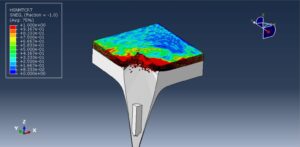
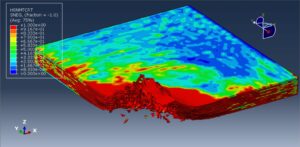
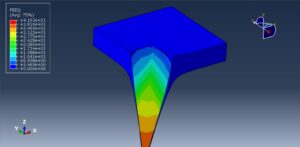
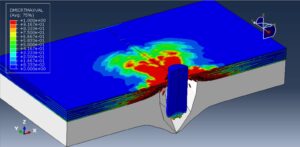
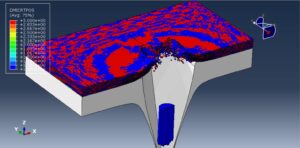
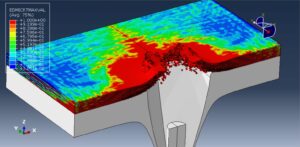
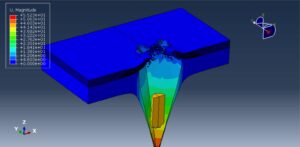
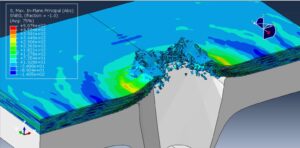
 Abaqus tutorials Abaqus tutorials
Abaqus tutorials Abaqus tutorials
